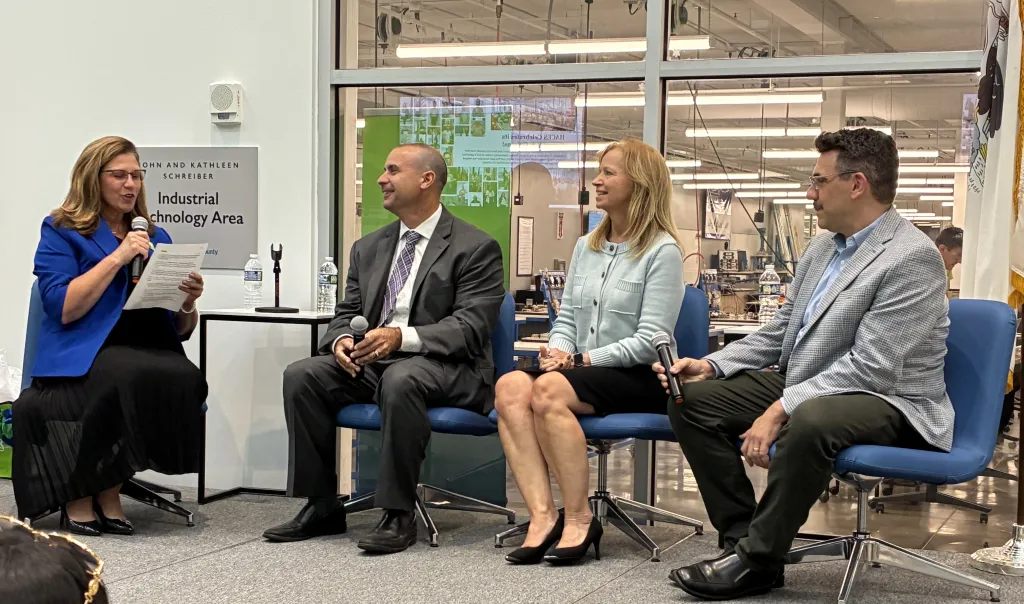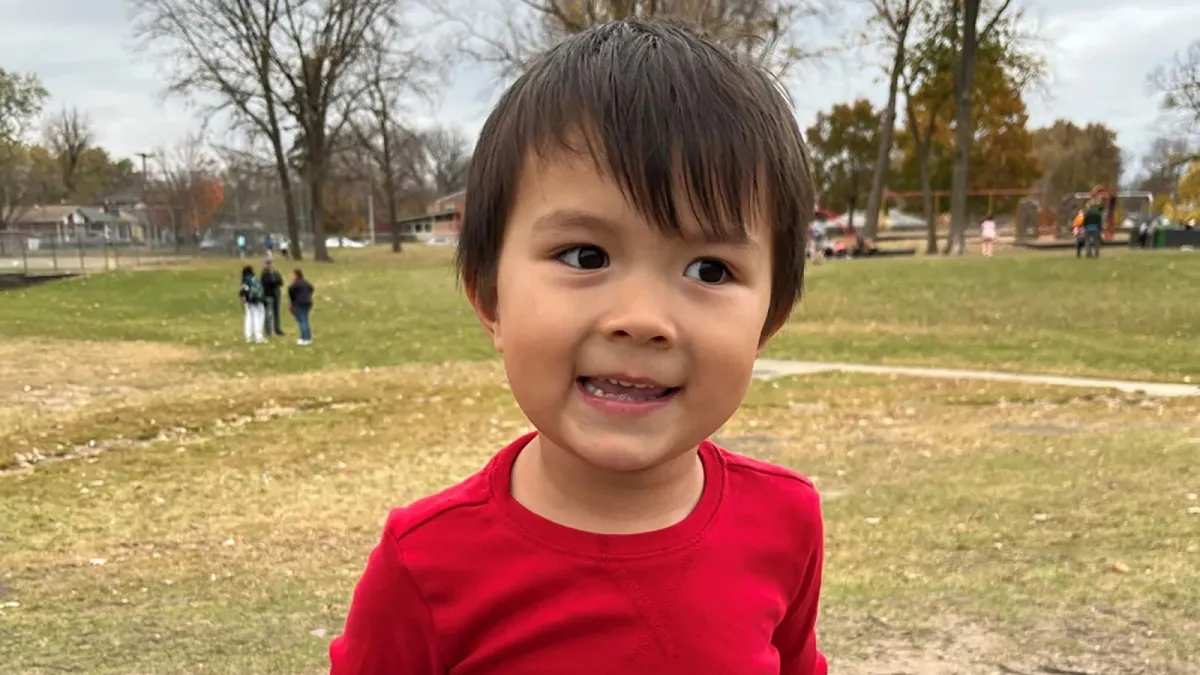
Partway through her annual State of the College address, College of Lake County President Lori Suddick talked about the importance of integrated partnerships for the success of the school and the community.
Suddick said integrated partners combine their efforts as one to “build resources, align processes, policy and plans” for the benefit of the people and organizations they serve in a “seamless manner.”
“Our opportunity is to intentionally weave CLC success frameworks with community organizations creating integrated education and workforce pipelines,” Suddick said.
After explaining the importance of partnerships with school districts, people tied to feeding the workforce and philanthropic organizations, Suddick called representatives of three of the college’s partners to the podium for a panel discussion of how they help each other.
Suddick added the panel discussion to her annual address Thursday at the school’s Advanced Technology Center in Gurnee giving a crowd of more than 100 people a glimpse of the past year and plans for the future, including a launch of the 2030 Strategic Plan.
Joining Suddick were Christopher Geocaris, assistant superintendent of instructional services at Warren Township High School; Lake County Workforce Development Board Executive Director Jennifer Serino; and Frank Baiocchi, executive director of the Hunter Family Foundation.
In their positions, panel members have different roles: getting people to the college, employing them as they continue or complete their education and, once they are on a path to success, helping them achieve it.
Geocaris said high school, rather than college, is a good time to learn whether a teenager is suited for a particular career, or whether they are even going to like it. Taking a first course can set them in either direction.
“We help kids try to differentiate what they might like or not like,” Geocaris said. “They say they want to try engineering, so they take an engineering course and it’s not for them. They discover it at 15, rather than when they’re in college or beyond college.”
As head of the Workforce Development Board, Serino said giving people access to a well-paying career is a multifaceted effort. Job seekers need access and opportunity, but they vary from person to person.
“They need the skills, and they need to get on a pathway,” Serino said. “Barriers have to be removed. They may need help with transportation or housing. They may need financial assistance. We need to remove barriers to give them access to opportunity so they can thrive.”
Once in a job and on a career path, Baiocchi said, people need to become familiar with their workplace environment and their co-workers. Improving skills is important, but so is relationship-building.
“It’s all about skills and relationships,” he said. “Building trust and relationships is the core of all of this.”
Approved by the college’s Board of Trustees in July, the school formally launched the 2030 Strategic Plan setting the course for the school over the rest of the decade. Suddick said the plan incorporates student access and success, community vibrancy and future-ready organization.
Seeking input from future students, as well as current ones and community members, Suddick said school officials talked to middle school students who are potential CLC students in 2030, as well as high school students, partners and community members.
Affordable access to the college is part of the plan, including financial support to meet evolving community needs, as well as necessary supports to meet varying student requirements. All of this is a key part of maintaining relevancy in a quickly evolving future, she said.
“This will advance pipelines to college, supporting students to persist to their goal and ensure they achieve a valuable return on their investment for credentials earned,” Suddick said.
During the past academic year, she said the college “launched” 3,600 graduates with more than 5,000 credentials. It represented a 16% increase in graduates — the highest since 2013.
Helping to lower the cost of college, Suddick said the dual-credit program with the county’s high schools helps students earn high school and college credit simultaneously. A 54% increase in the past year, 5,000 students participated.
“Dual-credit means earning college credit at no cost to families, thus over $4 million in tuition was saved for families of Lake County,” Suddick said. “Sustained record-setting improvements will not continue without our continued evolution.”



